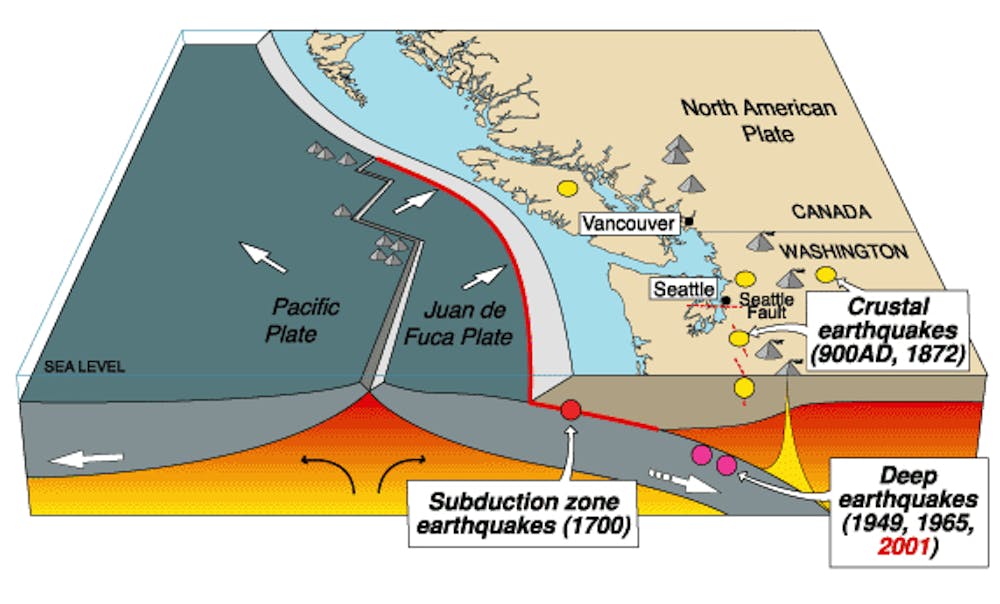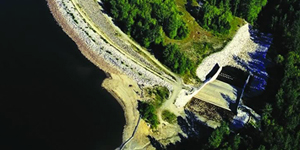The
following report and photos were provided to MBVRC by Dr. Jeff
Witter, Vancouver, B.C. Jeff studies gas emissions at active
volcanoes. He heads up the International Volcano Monitoring Fund, a
non-profit organization that seeks to assist third world volcano
monitoring programs.
 |
| Figure 1. The Dorr Fumarole Field is located high on the NE flank of Mount Baker and is much smaller than the main area of steam vent activity at Sherman Crater. |
“Mapping
fumaroles at Baker’s Dorr Fumarole Field
On
July 25 – 27, 2009, Jeff Witter and Ryan Wilson crossed steep ice
slopes and glaciers to map the little-known Dorr fumarole field.
These fumaroles are at ca 7800 ft (2375 m) elevation at the base of
the Cockscomb, the rocky, rugged northeast ridge of Mount Baker
dividing the Park and Rainbow Glaciers (also see the map on the
‘About
MBVRC’
page).
Their
goal was to make a map of the extent and geologic characteristics of
the fumarole field as well as to assess current fumarolic activity
for comparison with previous reports. A fumarole field is an area
with volcanic steam vents. Other than the numerous steam vents
inSherman Crater south of Mount Baker’s summit, the Dorr fumaroles
are the only known center of fumarolic activity on Mount
Baker. Access to the Dorr fumarole field is not easy and requires a
rope, an ice ax, and glacier travel experience. An overnight camp on
Ptarmigan Ridge is required if any time is spent working at the
fumaroles.At
Dorr, the steam vent activity has converted the nearby rocks into
clay and other minerals in a process called hydrothermal alteration,
the result of sulphur-rich gas emitted by the fumaroles.
Jeff
and Ryan’s mapping revealed that the Dorr fumarole field is a ~400
m long x ~100 m wide N-S trending zone consisting of various types of
hydrothermally altered ground; this is relatively small compared to
other fumarole fields. The central and southern portions of the
fumarole field are punctuated by numerous steam vents with the most
vigorous steaming activity concentrated in the south.
During
the July 2009 visit, no less than 12 individual steam vents were
mapped. Several more steam vents were observed but not mapped in the
southernmost sector of the fumarole field and on a rubbly slope
beneath an ice cliff considered too hazardous to approach. The
maximum temperature measured in the Dorr steam vents was 90 ºC,
which is equivalent to the boiling point of water at that elevation,
and comparable to most vents in Sherman Crater.
Steam
emissions at the mapped vents were generally weak and wispy, easily
dissipated by a light breeze. Observations at the Dorr fumarole field
in July 2009 are in marked contrast to previous observations. In
August 1990, Dave Tucker reported “hundreds” of thumb-sized steam
vents scattered about the fumarole field. These qualitative
observations suggest that activity at the Dorr fumaroles has
decreased since 1990, consistent with studies concluding that the
overall activity at Mount Baker volcano has been decreasing since the
“failed eruption” of 1975 (e.g. Werner and others, 2009. See
MBVRC References webpage.)
The
team from the IVM-Fund plan to return to the Dorr fumaroles next
summer to make quantitative measurements of the steam emissions to
serve as baseline values for comparison with future measurements. A
USGS-sponsored team also plans to visit the fumaroles in summer 2010
to collect gas samples for the first-ever chemical analyses of Dorr
fumaroles gases.”















